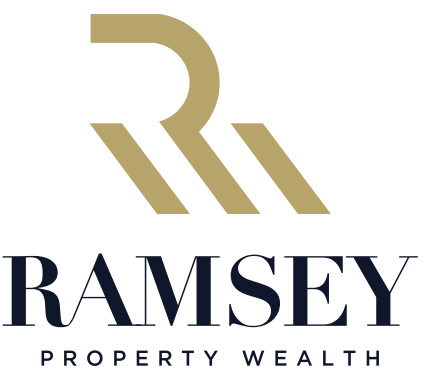The 2025 Federal Budget introduces targeted measures to address housing affordability, infrastructure gaps, and cost-of-living challenges. While short-term pressures may temper price growth in specific segments, strategic opportunities emerge in regional markets and prefabricated housing. Investors must balance inflationary risks, interest rate trends, and policy-driven supply increases to optimise portfolios.
Key Budget Highlights
Housing Initiatives
- $800m Boost to Help to Buy Scheme: Income and price caps raised, enabling approximately 1,000 additional home purchases annually (capped at 40,000 total places over four years).
- $54m for Prefabricated/Modular Homes: Supports a sector projected to grow at 11.2% CAGR, reaching AUD 22.28 billion by 2028.
- Foreign Buyer Ban: Two-year prohibition on foreign purchases of existing dwellings, freeing ~1,800 properties annually for domestic buyers.
- Housing Australia Liability Cap Lifted: Increased to $26 billion to accelerate social and affordable housing projects.
- Investment in training programs for builders.
Infrastructure & Regional Development
- $17.3bn for Regional Infrastructure: Includes $7.2bn for Queensland’s Bruce Highway, $2.3bn for Western Sydney rail, and $2bn for Melbourne’s Sunshine Station.
- $3bn for National Broadband Network (NBN): Enhances connectivity, boosting appeal of regional markets.
Cost-of-Living Relief & Tax Benefits
- Energy Rebates: $150/household electricity relief extended (costing $1.8bn).
- Tax Cuts: Additional $268–$536 annual savings from 2025–2027.
- Student Debt Reduction: 20% cut to loans, freeing borrowing capacity for first-home buyers.
Industry & Innovation Support
- $3bn for Green Metals Production: Part of the "Future Made in Australia" initiative.
- $20m "Buy Australian" Campaign: Supports local industries impacted by global trade shifts.
Implications for the Property Market
The 2025 Budget creates a balanced property market outlook over the next two years, with counteracting forces moderating extreme price movements.
Upward Pressures
- Improved borrowing capacity from tax cuts ($268–$536/year), energy bill relief, student debt cut ($19bn slashed), and wage growth.
- Infrastructure investments ($17.3bn) stimulating demand in regional and sub-urban markets.
Downward Pressures
- Foreign buyer ban (Approximately 1,800 properties/year redirected to domestic buyers).
- Slower population growth (1.2% p.a.) cooling rental and capital growth.
- Medium to long-term supply boosts from prefabricated housing (11.2% CAGR) and social housing initiatives.
- Increasing affordable and social housing stock.
Net Effect
- While short-term competition may intensify in the $800k–$1m price bracket (driven by Help to Buy expansions), broader market dynamics suggest moderate, stable growth. Rental markets face mixed signals—constrained supply from non-rentable Help to Buy homes versus slower migration-driven demand.
Short-Term Pressures & Demand Dynamics
- Price Points $800k–$1m: Increased buyer competition due to Help to Buy expansion, though impact is marginal (0.14% of annual sales).
- Foreign Buyer Ban: Likely downward pressure on luxury and inner-city markets, benefiting domestic buyers.
- Borrowing Capacity: Tax cuts and student debt relief may lift purchasing power, offsetting elevated interest rates.
Rental Market Outlook
- Supply Constraints: Help to Buy homes are non-rentable, potentially tightening rental availability.
- Migration Policies: Slower population growth (1.2% p.a.) to moderate rental demand.
- Affordable and Social Housing Investments: Housing Australia initiatives may ease medium to long-term rental pressures.
Long-Term Supply Trends
- Prefabricated Housing Growth: The prefabricated construction sector is forecasted to grow at an annual rate of 11.2%, reaching AUD 22.28 billion by 2028. Rising modular construction to boost supply from 2027, easing price growth.
- Infrastructure-Led Demand: Regional connectivity upgrades (e.g., Bruce Highway, NBN) to drive commercial and residential developments.
Strategic Takeaway
-
Investors should adopt a dynamic, data-driven approach, capitalizing on regional infrastructure tailwinds while hedging against inflationary
risks and interest rate volatility. The balanced outlook underscores the importance of diversification and targeted acquisitions in growth
corridors.
Macroeconomic Outlook and Risks
- Debt-to-GDP: Elevated deficits may constrain future fiscal flexibility and pressure Australia’s AAA credit rating, potentially raising borrowing costs for businesses and households.
- Inflation & Interest Rates: CPI is projected to rise to 3%, compounded by structurally elevated public spending. This complicates the RBA’s ability to pursue rate cuts in the near term.
- GDP Growth: Forecast at 2.25%, supported by wage growth (from non-compete clause reforms) and productivity gains. However, the global economic and policy uncertainty has increased with the Trump Tariff and geopolitical unrest. Recent OECD report has discounted the above growth rate to 1.8%.
- Population Growth: Slowing to 1.2%, contributing to cooler house price growth.
Conclusion
Overall, the 2025 Budget presents a mixed impact on the property sector. While measures such as the Help to Buy scheme and regional infrastructure investments offer growth opportunities, rental market support remains limited. Stricter migration policies and increased housing supply initiatives could moderate price growth, fostering a more balanced market in the medium to long term. Investors should consider these dynamics when strategizing their property investments for the coming years.
